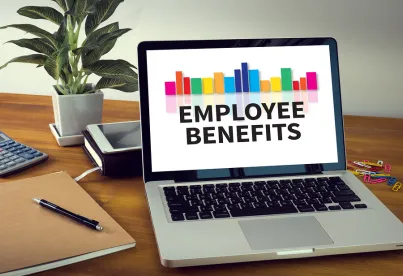In the wake of the COVID-19 pandemic, reductions in hours, furloughs and temporary closures are becoming an increasingly common and unavoidable occurrence. Employers can expect to encounter questions with respect to employee benefits offered to affected employees. While the facts and circumstances of each case will vary, common themes exist, a few of which are mentioned below.
Hardship Distributions and Loans from Qualified Retirement Plans
Employers are likely to see an uptick in requests by affected employees for hardship distributions and loans from qualified retirement plans as employees turn to their retirement savings to offset extended periods of unpaid leave. Generally, Federal tax law restricts an employee’s ability to access 401(k) savings until the employee reaches age 59½. An exception exists for hardship distributions if there is an “immediate and heavy” financial need to pay for certain types of expenses. While the requirements for each plan may vary, most plans use the IRS’ “safe harbor” list of approved expenses, which includes: medical care, tuition and other educational expenses, and rent or mortgage payments necessary to prevent eviction or foreclosure.
Similar to a hardship distribution, some retirement plans allow employees to obtain a loan from their retirement account. Plan loans differ from hardship distributions, since they must be repaid pursuant to a repayment schedule, and are limited to the lesser of: 50% of the employee’s account balance, or $50,000. Most loans must be repaid over a five-year repayment schedule and, depending on the terms of the loan, repayments may be suspended for up to one year while an employee is on an unpaid leave of absence. Unlike hardship distributions, which can only be used to pay for immediate and heavy expenses, plan loans can be used for any expenses.
Finally, retirement plans may allow employees to receive their entire account balance as a cash-out distribution following a termination from employment. A cash-out distribution may trigger various withholding and excise taxes. Accordingly, using a cash-out distribution as a substitute for a paycheck following a termination can create undesirable tax consequences for the employee.
COBRA Continuation Coverage and Premium Payments During Leave
When an employer lays off an employee and the termination of employment results in a loss of health insurance coverage, then the employee experiences a qualifying event that gives rise to the right to continue coverage under the requirements of the Federal law known as “COBRA”. Some states also provide similar continuation coverage rights for employees that are employed by employers that are not large enough to be subject to COBRA. During these times when employees have their hours reduced or if they are furloughed, it is less clear whether the employees have experienced a COBRA qualifying event. Employers should first look to the terms of their group health plan documents to assess whether certain employer-initiated actions will cause the affected employees to lose their coverage and give rise to a COBRA qualifying event. Additionally, employers need to be mindful of the impact that reductions in hours will have on the full-time status of covered employees for purposes of the employer insurance mandate under the Patient Protection and Affordable Care Act (the “ACA”). If the employer terminates coverage hastily, such actions could expose the employer to the ACA’s “pay-or-play” penalties for failing to offer/maintain coverage for full-time employees, particularly with respect to variable hour employees that are determined to be full-time in a current stability period.
Most group health plans have eligibility requirements tied to the number of hours that must be worked by employees to remain eligible for coverage. For regular, full-time employees, a reduction in hours or temporary closure may cause the employee to fall below the requisite minimum hours threshold to remain eligible for coverage. If that change in employment status results in a loss of coverage under the terms of the group health plan then the employee would experience a COBRA qualifying event. Care should be taken before terminating the health insurance coverage of variable hour employees since the ACA’s look-back and stability period rules require employers to treat variable hour employees determined to be full-time for a look-back period to be full-time employees for the associated, forward-looking stability period despite the actual number of hours worked by the employee during the stability period.
Employers will also be faced with decisions regarding how to pay for employees’ health insurance during times when employees do not experience a loss of coverage, but nevertheless, are not receiving paychecks from which the employer can deduct the employee-paid portion of insurance premiums. In these cases, employers should look to existing unpaid, leave of absence policies and/or the terms of the employer’s Section 125 cafeteria plan that may shed light on the options for employers to make arrangements with the employees to pay for insurance premiums during periods when the employee is not working. Options include making arrangements with the employees for pre-payment of premiums, “pay-as-you-go” with the employee’s non-wage financial resources, or catch-up payments when the employees return to work and start earning wages again.
Summary
Employers should be aware of the common employee benefit related issues that may arise during the COVID-19 pandemic. The current situation is extremely fluid and issues and concerns among employers and their employees are arising on a daily basis. We are available to assist employers with these issues and concerns, and to help navigate the complex ecosystem of employee benefits.





 />i
/>i

